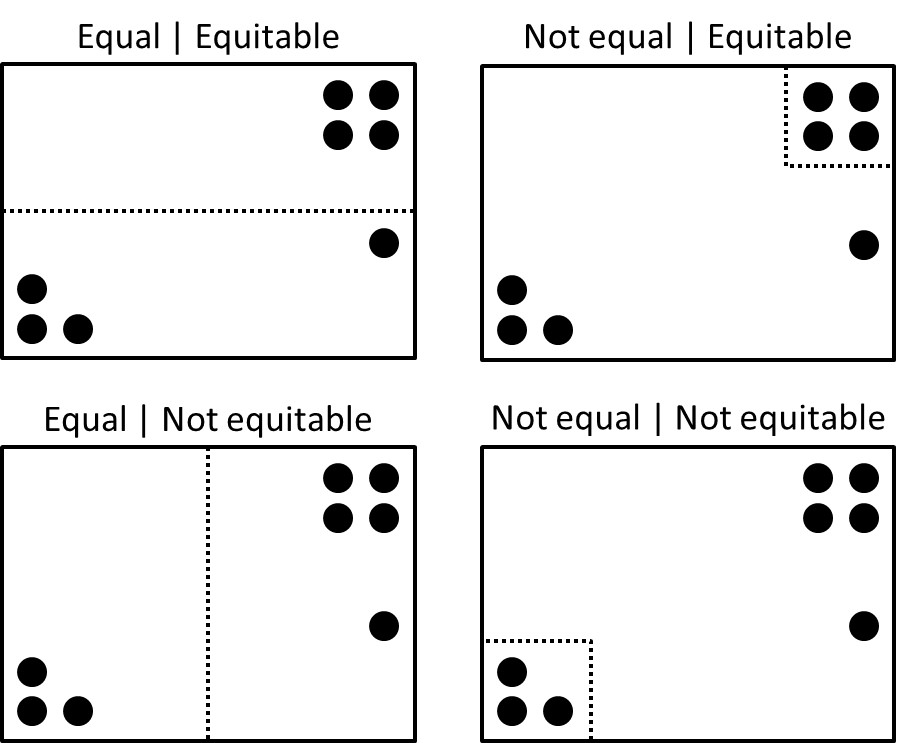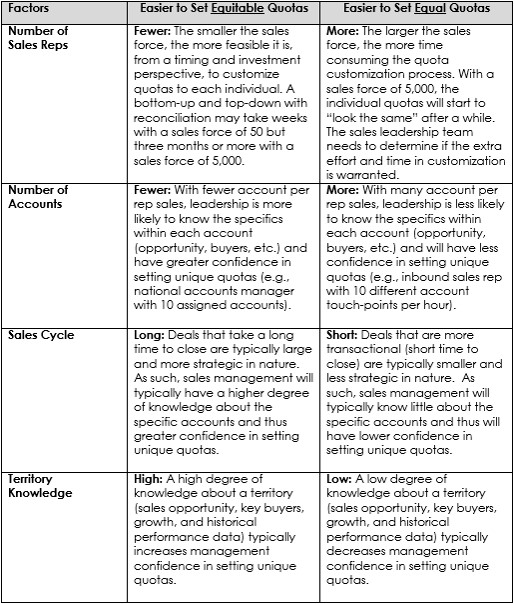Equal vs. equitable sales quotas: What’s the difference?

At the start of every sales compensation and quota-setting engagement, Alexander Group (AGI) asks its clients one (deceptively) simple question: How do you set equal or equitable sales quotas? The responses are inconsistent and confusing. Clients often define the approach with descriptors such as “fair,” “same,” “even,” “opportunity-based,” and “potential.” More often sales leaders respond with the question: What’s the difference between equal and equitable? Actually, there’s a big difference. These descriptors do not apply to both terms. It’s important that the sales leadership team clearly communicate the difference and what factors they considered in adopting one methodology over the other.
Baseline Definitions
For most, equitable simply means fairness, or with equity. The word equal most commonly denotes some form of division into proportions of the same size – equal slices of pie, equal number of accounts per rep, equal $3M quota per rep. However, both “fair” and “proportionally the same” (i.e., equitable, equal) used alone are meaningless until one finishes the question: “fair based on what?” or “the same based on what?”
Equal vs. Equitable Quotas
AGI advocates setting quotas that are equitable – fair and aligned with the opportunity (the “what”) in any given territory. Quotas that are equitable but not equal are better quotas than those that are equal but not equitable (see distinctions in graphic below).
Vernon Wall, a consultant and lecturer on social justice, explains it best: “Equal is every child having a pair of shoes. Equitable is every child having a pair of shoes that fits.” Whenever possible, set equitable quotas — make sure your sales force has “shoes that fit.” There are circumstances, however, where sales leadership may find it difficult to set equitable quotas. In those instances, equal quotas may make sense and are easier to communicate to the sales force. The table below notes some typical circumstances, or factors, when it is easier to set either equitable or equal quotas:
Communicating Your Message:
Regardless of the approach sales leaders take, frequent and clear communication to the sales force is critical in creating strong buy-in. Below is a simple sales leadership talk-track, or messaging, for each approach:
Equitable: “We set sales quotas that are fair and aligned with the sales opportunity within a territory. Quotas will therefore vary across our sales force due to the differences in territory makeup. We evaluate factors like number of accounts, type of accounts and projected growth and historical spend by territory to fine-tune the sales quota by territory.”
Equal: “We set sales quotas that are fair and aligned with the sales opportunity within a territory. Quotas do not vary across our sales force due to the similarities in territory makeup. Factors like number of accounts, type of accounts and projected growth and historical spend by territory are consistent across territories. This allows us to set equal sales quota by territory.”
Aligning sales quotas and territories will always remain part art and part science. Maintain the core principles of quota setting: stretch but achievable and aligned to the sales opportunity. Keep in mind too, that setting quotas fairly should result in normalized attainments; expect around 40 percent will not meet goals or their at-plan pay. The message here is to set fair quotas: results and payouts will not be equal in terms of individual success.



